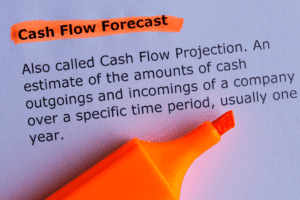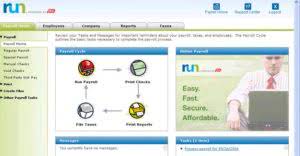Ledger Crypto Wallet Security for DeFi, NFTs & Web3

The purchase ledger shows which purchases have been paid for and which purchases remain outstanding. A typical transaction entered into the purchase ledger will record an account payable, followed at a later date by a payment transaction that eliminates the account payable. Thus, there is likely to be an outstanding account payable balance in the ledger at any time. The five ledgers in accounting are the General Ledger, Accounts Payable Ledger, Accounts Receivable Ledger, Inventory Ledger, and Payroll Ledger. Each ledger serves a specific purpose in tracking financial transactions and maintaining accurate records.
Key Components of a Purchase Ledger
- For example, the accounts payable subsidiary ledger contains details about all the money that a business owes to its suppliers.
- If you need to know more about the structure and the statistics of purchase ledger then you should definitely check out this Purchase Ledger Sample.
- For example, if my PLCA balance increases from \$10,000 to \$11,300, it indicates that my business has taken on more short-term debt, which could affect liquidity ratios.
- Furthermore, the purchase ledger plays a vital role in managing supplier relationships.
- You can make use of the qualities present here to appoint the analyst of your organization’s purchase ledger.
The seamless connection of purchase ledger systems with other business software creates a unified platform for data management. Meanwhile, advancements in cybersecurity, particularly through blockchain, offer robust protection against fraud and data breaches. From the perspective of an accountant, the adoption of advanced reconciliation methods means a significant reduction in manual errors and an increase in efficiency. For instance, using automated reconciliation software can help in quickly identifying unmatched transactions, thereby saving valuable time and resources. On the other hand, a procurement officer might value these techniques for the enhanced visibility they provide into supplier performance and contract compliance. By integrating these technological advancements, companies can not only enhance the efficiency of their purchase ledger but also gain strategic insights that drive better procurement decisions.
What are the ledger entries in bookkeeping?

In this guide, I’ll walk you through everything you need to know about the purchase ledger, from its basic definition to advanced techniques for managing it effectively. Examples of general ledger accounts include cash, accounts receivable, accounts payable, inventory, property, plant and equipment, and retained earnings. These accounts are used to track financial transactions and maintain accurate records of a company’s financial activities. Overall, understanding the various ledger considerations in bookkeeping and accounting is essential for maintaining accurate financial records and making informed business decisions. Accountants and bookkeepers play a crucial role in maintaining accurate and up-to-date financial records for businesses.

Ledger Crypto Wallets
There are several types of ledgers, including general ledgers, subsidiary ledgers, and control ledgers. Each type of ledger serves a specific purpose and is used to keep track of different financial transactions. As these systems continue to evolve, they will not only transform procurement processes but also play a pivotal role in the broader financial ecosystem of organizations. The key to proficiency in this area will be the continuous learning and adaptation to these emerging technologies and trends.
- This accounting and bookkeeping course lays out the essential techniques used to effectively oversee purchase ledgers.
- Let’s explore their key components and broader impact on financial operations.
- This compliance bolsters the credibility and reliability of financial statements, which is critical for stakeholders and investors.
- 1- A purchase ledger serves as record keeper which holds full record of all business transactions and their correspondences along with essential documents.
- Sub-ledgers (subsidiary ledgers) within each account provide additional information to support the journal entries in the general ledger.
To ensure that the payments made by the company are fully authorized and are entered correctly, the purchase ledger often demands a copy of the invoice issued by the supplier. Those copies are then matched with the amount mentioned in the record for that transaction. All the information entered and gathered in a purchase ledger is then finally transferred to the general ledger. Depending on the company’s policy, the transfer is generally made after the end of an accounting period for a company, or it can also be done in between the accounting period.

It tracks the amounts owed to suppliers and vendors, ensuring that payments are made on time and that financial records are accurate. Think of it as a detailed log of every transaction involving goods or services purchased on credit. Within the realm of accounting and bookkeeping, two essential components are the purchase ledger and sales ledger. These ledgers play a crucial role in tracking financial transactions and maintaining accurate records for businesses.
The amounts recorded in the purchases account may be for raw materials that will require purchase ledger subsequent conversion to be made ready for sale, or they may be for completed merchandise. For today’s Operations Managers, the endless balancing act of manual processes, data tracking, and… Sundry Debtors ledger shows the total amount receivable by the business from credit sales. As per traditional or UK style accounting, GL consists of all nominal & real accounts necessary to prepare financials for a company. This can be done by recognising an “accrual” for the goods which sits as a liability on the balance sheet, in place of the trade creditor.
Navigating the Complexities of International Procurement

This ledger is often also used to keep track of items that reduce the number of total sales, such as returns and outstanding amounts still owed. It’s a continuous process that requires diligence, adaptability, and a proactive stance to stay ahead of the ever-evolving tactics of fraudsters. In practice, consider a business that discovers a discrepancy in an invoice for computer equipment. The purchase ledger shows an order for five computers, but the invoice charges for six. With a well-maintained ledger, the error is quickly spotted and rectified, showcasing the ledger’s role in safeguarding the company’s financial health. A general ledger or GL balance sheet is a centralized compilation for all the ledger accounts of a business.
What Is a Purchase Ledger Account?
They are essential for managing cash flow, maintaining accurate financial records, and building strong relationships with suppliers and customers. The purchase ledger, also known as the accounts payable ledger, is a record of all the purchases made by a business. It tracks the company’s outstanding invoices and payments owed to suppliers or vendors. The purchase ledger is crucial for managing cash flow, ensuring timely payments, and maintaining good relationships with suppliers. Maintaining accurate purchase records is a Record Keeping for Small Business cornerstone of financial management and accountability in any business.
